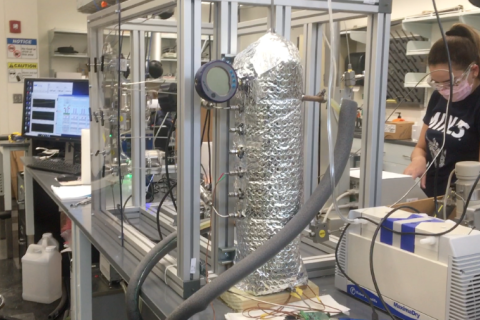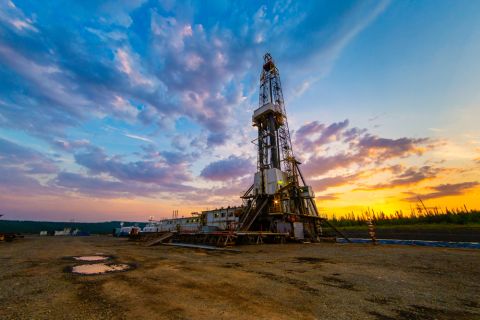Presented by:
One of the more frustrating things I have experienced in my work over the years is watching politicians and talking heads, most of whom normally ignore the oil and gas business or energy policy, suddenly become experts when energy becomes big news. I have seen it happen over and over for 30-plus years. Statements such as “We can’t drill our way out of high prices” and “We are running out of oil” always seem to turn out wrong.
Once again, we suddenly find ourselves in a global crisis, in part due to the Russian invasion of Ukraine, and political “experts” are on television repeating their talking points. One of the more frustrating mantras is this notion that the industry is squandering unused leases and that they must “use it or lose it.” Such a position reflects a fundamental misunderstanding of the oil and gas business.
In simple terms, obtaining a lease is not like buying a six pack of beer, when every can guarantees 12 fluid ounces. When a company purchases a lease, one does not know whether the leased area will include any oil and gas to produce. Of course, we find that out by exploring and drilling, and we do not drill every lease all at once. Instead, businesses purchase leases in an area and explore. If a productive play is discovered, then leases are developed where hydrocarbons exist. On the other hand, if oil or gas is not found, adjacent leases are unlikely to be developed. Hence there are always leases that are not being utilized. It’s a basic tenet of oil and gas exploration.
Poet Alexander Pope wrote “A little learning is dangerous thing,” and that is clearly true today for policymakers. To say that the industry is not extracting the oil and gas it is capable of producing because there are leases that are not being developed is either the result of ignorance or insincerity. In either case, it’s insulting and unproductive.
A personal favorite anecdote that I referenced during my days on Capitol Hill is Perdido, the deepest offshore spar platform in the world. Shell began to purchase the leases in the Gulf of Mexico that are part of the Perdido development in 1996, when the technology for developing the leases did not even exist. Over the years, however, Shell in fact developed the technology and produced first oil in 2010. Peak production at Perdido has been huge—100,000 bbl of oil and 200 MMcf of natural gas per day, utilizing a network of 27 miles of underwater pipelines on the seafloor in 8,000 ft of water. This feat could not have been accomplished had Shell not been able to hold its leases and prove out the play.
Watch Jack Belcher in the latest installment of Energy Policy Watch, a partnership between Hart Energy and Cornerstone.
Subscribe to receive notifications about new Energy Policy Watch episodes.
Now, in the face of a global energy and geopolitical crisis, politicians on television are in essence telling the industry it does not know how to do its business. They are also claiming we cannot increase our domestic production in the U.S. to offset what has been lost from Russia. While it might take some time to ramp up, nothing could be further from the truth. Consider that prior to the pandemic, the U.S. was producing over 13 MMbbl/d, up from just 5 MMbbl/d in 2008.
Virtually nobody, and certainly not the government, predicted the shale revolution. No one predicted the U.S. would become the world’s largest producer of oil and natural gas, but it happened. Why? It happened because the industry applied the right technology and know-how to solve a complex problem and because it happened on private lands where the federal government could not stand in the way.
Let’s look at what U.S. natural gas can do for the world, and especially Europe who, in part due to the war and the halt of the Nord Stream 2 Pipeline, is suffering from record energy prices that are devastating its economy. In 2022, the U.S. became the world’s largest LNG exporter, with several new projects in various stages of being planned and built. To understand just how significant and impactful U.S. LNG is to the world, consider this: Just two facilities, Golden Pass LNG (when completed) and Cheniere’s Sabine Pass, will have the capacity to export a combined total of 6.15 Bcf/d. Compare that to the recently halted Nord Stream 2 Pipeline, which would have brought a maximum of 5.32 Bcf/d to Europe.
U.S. oil and gas producers and exporters are well-positioned to bring much-needed energy supplies to the global market. We just need a government that understands and believes in our ability to deliver them and allows us the opportunity to do so.
Recommended Reading
Fracturing’s Geometry Test
2024-02-12 - During SPE’s Hydraulic Fracturing Technical Conference, industry experts looked for answers to their biggest test – fracture geometry.
Going with the Flow: Universities, Operators Team on Flow Assurance Research
2024-03-05 - From Icy Waterfloods to Gas Lift Slugs, operators and researchers at Texas Tech University and the Colorado School of Mines are finding ways to optimize flow assurance, reduce costs and improve wells.
Drilling Tech Rides a Wave
2024-01-30 - Can new designs, automation and aerospace inspiration boost drilling results?
Lift-off: How AI is Boosting Field and Employee Productivity
2024-04-12 - From data extraction to well optimization, the oil and gas industry embraces AI.
Defeating the ‘Four Horseman’ of Flow Assurance
2024-04-18 - Service companies combine processes and techniques to mitigate the impact of paraffin, asphaltenes, hydrates and scale on production — and keep the cash flowing.







